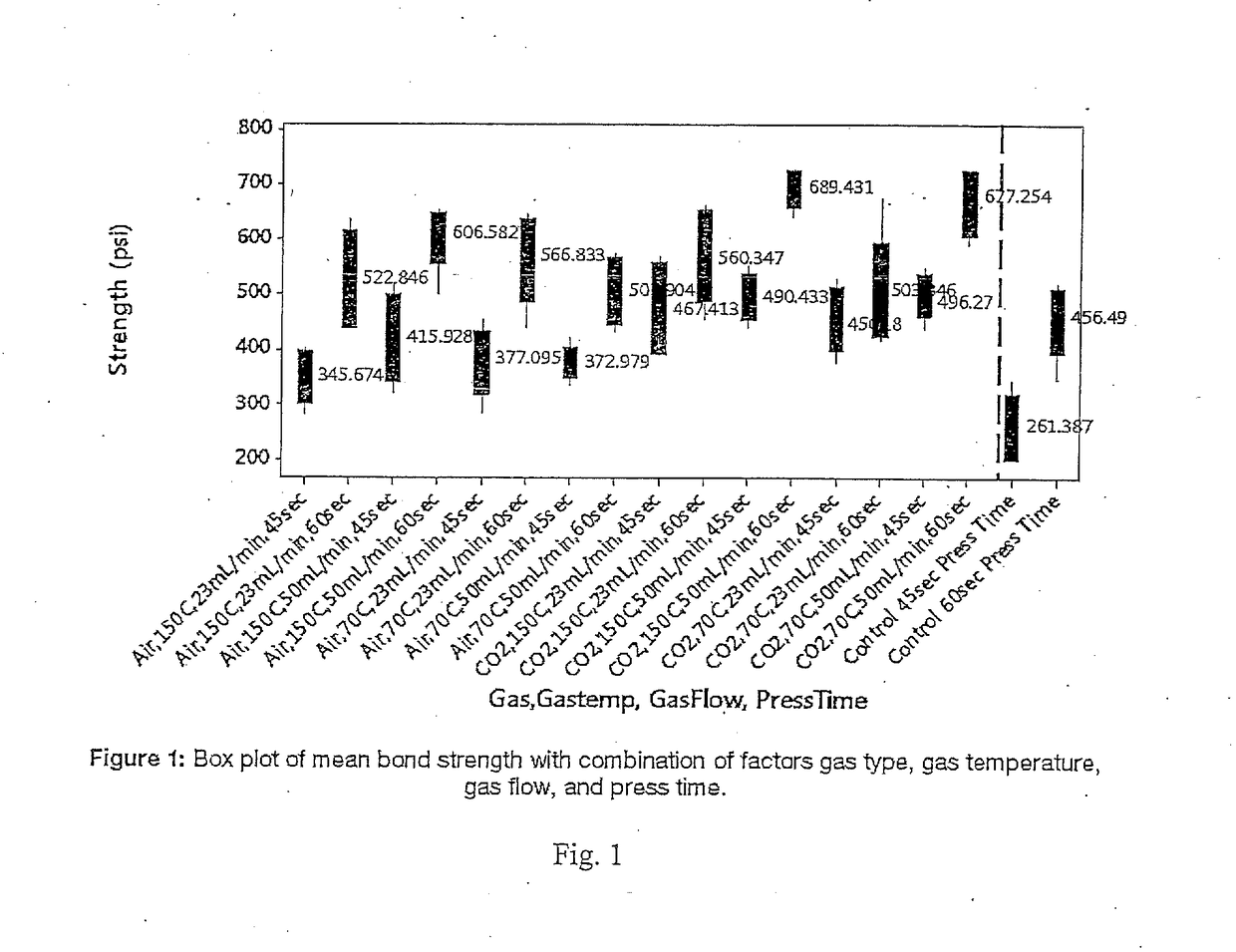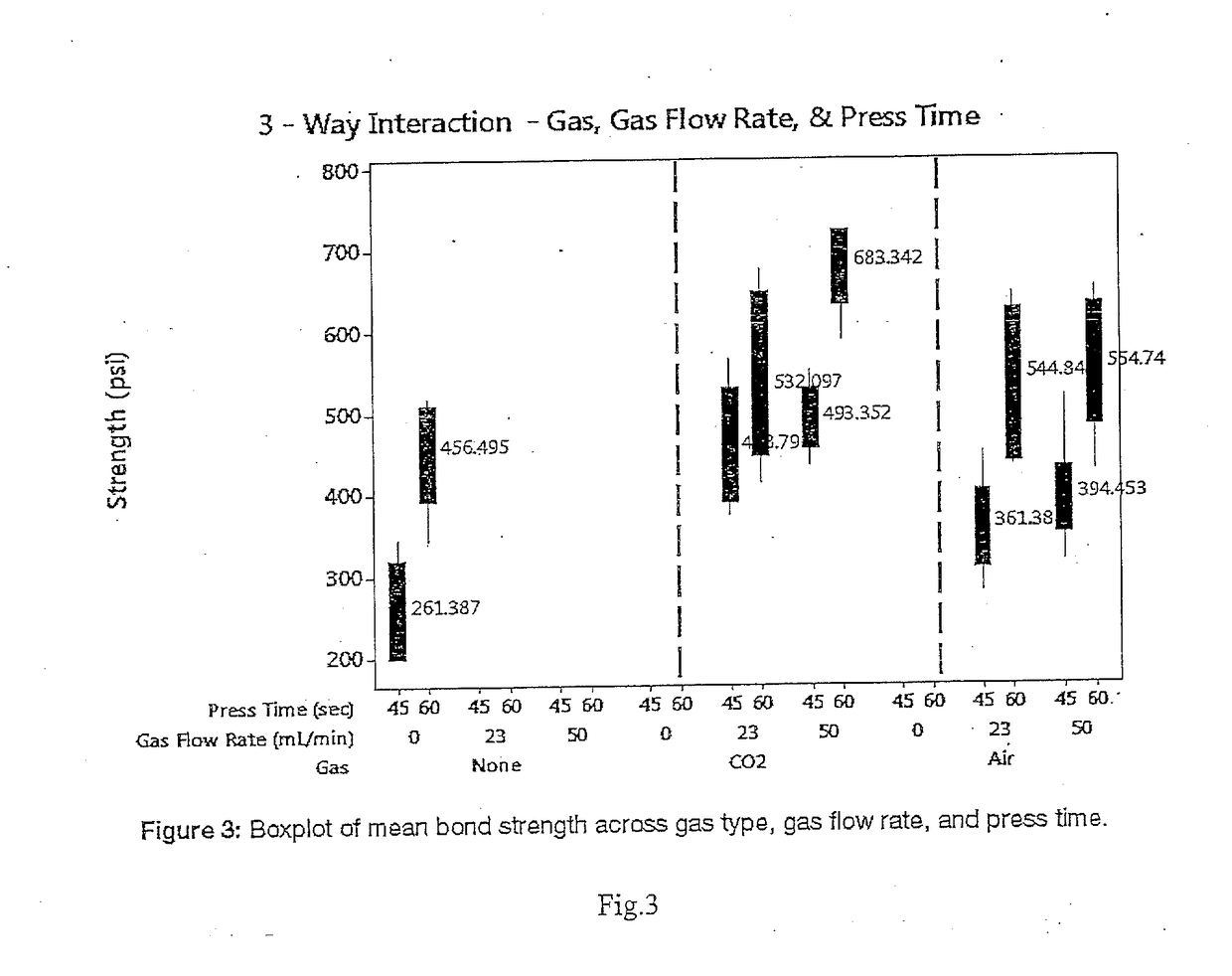Method for bonding lignocellulosic material with phenolic resin and gaseous carbon dioxide
a technology of lignocellulosic material and phenolic resin, which is applied in the field of bonding lignocellulosic material, can solve the problems of not being quite desirable for steam injection, and the process of mats that must spend too long in the press is usually not very economical
- Summary
- Abstract
- Description
- Claims
- Application Information
AI Technical Summary
Benefits of technology
Problems solved by technology
Method used
Image
Examples
example 1
[0040]Mean bond strength was determined as a function of gas type, gas temperature, gas flow, and press time. The results are displayed in FIG. 1.
example 2
[0041]Mean bond strength was determined as a function of gas type, gas temperature, and gas flow rate. The results are displayed in FIG. 2.
example 3
[0042]Mean bond strength was determined as a function of gas type gas flow rate and press time. The response results are displayed in FIG. 3.
Discussion of the Results
[0043]The results of the testing indicated that the pull force of the invention provided for a 16 to 50% increase in bond performance over conventionally produced cellulosic mats. Such improvements in a commercial process would result in substantial improvements to cycle time.
PUM
 Login to View More
Login to View More Abstract
Description
Claims
Application Information
 Login to View More
Login to View More - R&D
- Intellectual Property
- Life Sciences
- Materials
- Tech Scout
- Unparalleled Data Quality
- Higher Quality Content
- 60% Fewer Hallucinations
Browse by: Latest US Patents, China's latest patents, Technical Efficacy Thesaurus, Application Domain, Technology Topic, Popular Technical Reports.
© 2025 PatSnap. All rights reserved.Legal|Privacy policy|Modern Slavery Act Transparency Statement|Sitemap|About US| Contact US: help@patsnap.com



